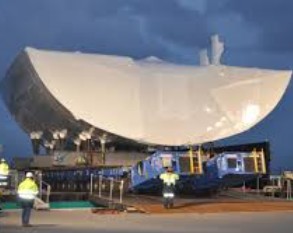
I noted a few weeks back how the Coalition has ear-marked tens-of-billions of taxpayer dollars to local defence manufacturing, including a $10 billion to $15 billion-program for 1,000 locally produced armoured vehicles, as well as locally designed and built submarines for around $40 billion.
Then later, The Australian reported how the Government is about to launch a new defence White Paper, targeting a near-doubling of the nation’s defence budget to $50 billion within a decade, with defence spending’s share of GDP also targeted to increase to 2% of GDP from 1.6% currently.
Today, The AFR has reported that Defence Minister, David Johnston, is pushing for a multibillion-dollar warship project, to be announced within months, to be built in Australia, despite these locally-built ships being around 30% more expensive than competitors overseas:
Senator Johnston is offering the Australian industry his full support despite a damning audit, revealed exclusively in The Australian Financial Review, that found the cost of the current destroyer project could blow out by hundreds of millions of dollars, and Coalition decisions to refuse or reduce corporate welfare for Coca-Cola Amatil and car manufacturing…
The shipbuilding industry, which includes foreign firms such as BAE Systems, Raytheon and Thales Australia, has mounted a vigorous lobbying campaign and says skills and up to 5000 jobs will be lost permanently unless new warships are commissioned soon…
Productivity Commission chairman Peter Harris, the government’s leading independent adviser on government efficiency, signalled building ships for the sake of jobs was a waste of money…
A study carried out by the Defence Materiel Organisation last year found Australian naval shipyards were 60 per cent less efficient than foreign naval shipyards and receive billions in subsidies…
I acknowledge that there is an argument to retain your own military hardware building capacity but at what cost? The Coalition’s hard line on industry assistance is cast in dark relief against its defence procurement policy. Australia could easily purchase proven, fit-for-purpose, military hardware from abroad at a fraction of the cost of developing similar technology locally, saving taxpayers billions in the process. While there’s an argument for local jobs, this same argument could equally be applied to manufacturers like Holden, Toyota, or SPC Ardmona where the subsidies were infinitesimal by comparison.
It’s these sorts of inconsistencies that undermine the Government’s goal of “ending the age of entitlement”. While it slashes benefits to some sections of the economy, it is allowing egregious lurks and subsidies to remain in others, which is undermines the Government’s calls for “shared sacrifice”, whilst also ensuring that the burden of adjustment is not broad-based, reducing its efficacy. As l’ve said before, a much clearer rhetorical framework for these decisions is needed.

